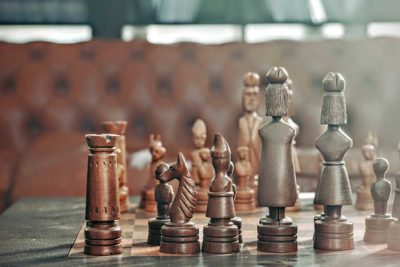
Intentional Infliction of Emotional Distress: Definition & Examples
This page has been peer-reviewed, fact-checked, and edited by qualified attorneys to ensure substantive accuracy and coverage.
Intentional infliction of emotional distress (“IIED”) is a civil tort that is sometimes referred to as the “tort of outrage.” A person commits intentional infliction of emotional distress by carrying out an extreme and outrageous act against their victim. This act must cause emotional trauma beyond the bounds of what a civilized community would tolerate.
To succeed in a claim of intentional infliction of emotional distress, a plaintiff must prove the following three elements:
- The defendant committed an extreme and outrageous act;
- The defendant acted intentionally or recklessly to cause severe emotional harm to another; and
- The defendant’s act caused the plaintiff to suffer severe emotional harm.
Read on for an in-depth explanation of the elements of intentional infliction of emotional distress (IIED). We will also cover how to prove IIED, the common defenses to an IIED charge, and how to find an attorney to help you with your case.
Let us help. Contact us for a free consultation with an intake specialist to help you explore your removal options and craft an effective strategy.Are you the target of defamation?
What is Intentional Infliction of Emotional Distress (IIED)?
Intentional infliction of emotional distress is an act considered so terrible and outrageous that it causes severe harm to the victim. In legal terms, IIED is classified as a civil tort.
A civil tort is an act or omission that causes injury or harm to another person, resulting in legal liability for the offender. Civil torts involve legal claims to procure private civil remedies, such as monetary damages, rather than criminal actions, which are punishable by the state and may result in imprisonment for the offender. In the context of civil torts, “injury” describes the invasion of any legal right, while “harm” describes a loss that an individual suffers.
A victim of IIED may be able to recover monetary compensation or other damages if they can prove the actor’s conduct “exceeded all permissible bounds of a civilized society.” Restatement (Third) of Torts: Liability for Physical and Emotional Harm §46.
However, not every incident that causes emotional distress is considered a legitimate IIED claim. Whether a valid claim for intentional infliction of emotional distress exists is based on a case’s specific facts. To be considered valid, the victim must show that the act was outrageous, extreme, and intentionally caused them harm.
There is also usually no requirement for the victim to have suffered physical harm. Claims of intentional infliction of emotional distress are strictly focused on the emotional distress the actor’s conduct intentionally caused. Thus, IIED claims hinge on the factual circumstances of the case and can be very difficult to prove.
The Physical & Mental Effects on Victims of Intentional Infliction of Emotional Distress
Victims of IIED often experience long-lasting effects of the incident. These effects include mental health problems like depression, anxiety, and chronic worrying. Additionally, they may become withdrawn, isolating themselves from the people who are important to them.
The distress caused by the incident can also compound over time and lead to more severe consequences, such as:
- Considering harming themselves or others,
- Suffering from mental illness and post traumatic stress disorder,
- Abusing drugs or illegal substances,
- Experiencing physical symptoms (like digestive disorders, migraines, or chronic fatigue).
What Types of Legal Matters Involve Intentional Infliction of Emotional Distress Claims?
There are several situations in which a claim for IIED might arise, including:
- Sexual harassment,
- Harassment based on gender or sexual orientation,
- Racism,
- Hate crimes and acts of harassment on protected groups (religion, national origin, age, etc.),
- Employment law violations.
Often, employees who cannot sue their employers for negligence may be able to sue them for IIED instead. These instances might be due to intentional personal injury or a hostile work environment.
IIED claims can be made in the context of a variety of legal matters, which is why having a reliable legal team working on your behalf is so important. Knowledgeable attorneys have the skill and experience to find the needle in the proverbial haystack—which in this case, means finding the right legal claim to fit each individual’s situation, whether it be IIED or not.
Elements of an Intentional Infliction of Emotional Distress Claim
Each state’s laws vary on what constitutes intentional infliction of emotional distress. Generally, victims must prove:
- The defendant committed an extreme and outrageous act;
- The defendant acted intentionally or recklessly to cause severe emotional harm; and
- The defendant’s actions caused the plaintiff to suffer severe emotional harm.
Because state laws vary, it is important to consult the specific state laws when evaluating a potential IIED claim.
For example, some states require that the plaintiff must have expert testimony (for instance, from a psychologist or other medical professional) to establish that they suffered severe enough psychological or emotional damage to meet the standard. Other states have no such rule.
An attorney in each state specializing in torts would be aware of the specific requirements for your state and would be best positioned to advise you.
How to Prove Intentional Infliction of Emotional Distress
To succeed in a claim for IIED, you will need to demonstrate that the following three elements are present in your case:
- It must consist of extreme and outrageous acts;
- Its purpose must have been to cause harm; and
- It must have caused severe emotional injury.
1. Proving Extreme & Outrageous Acts
Extreme and outrageous are similar but distinct limitations. An act could be considered outrageous — such as infidelity — but not extreme. And on the other hand, an act could be extreme — such as cliff diving — but not outrageous. To qualify under an IIED claim, the act must be both.
Extreme and outrageous conduct is generally considered to be “so outrageous in character, and so extreme in degree, as to go beyond all possible bounds of decency, and to be regarded as atrocious, and utterly intolerable in a civilized community.”
Generally, extreme and outrageous acts go beyond what is considered decent by society. Conduct that is merely insulting or poorly mannered is not considered to be extreme and outrageous.
Unfortunately, there is no specific test for whether the conduct in question was both extreme and outrageous. It will always depend on the particular facts of the case. The jury will look at certain factors, including:
- The parties’ relationship;
- Whether the actor abused their authority over the victim;
- The actor’s rationale;
- Whether the victim was particularly vulnerable; and
- Whether the conduct was constant.
Examples of Extreme & Outrageous Acts That Have Been Found to be Sufficient or Insufficient to Prove Intentional Infliction of Emotional Distress
In an example of conduct that did not meet this bar, a teacher was subjected to insulting and condescending comments from her principal. She was then escorted to her car by police. The court determined that these acts were not outrageous–even if they were extreme. The court concluded that:
“These occurrences may very well have been distressing and hurtful to the plaintiff. They do not, however, constitute extreme and outrageous conduct…. In fact, this court has noted that “it is not patently unreasonable for an employer to remove a… discharged employee from its premises under a security escort.”
In another instance, an employee went to the hospital after his supervisor had yelled and cursed at him. He complained of chest pain, headaches, and difficulty breathing. The employee was diagnosed as having a panic attack.
The employee brought an IIED claim against the supervisor. However, the court found that because the yelling only lasted for one minute, it did not qualify as extreme and outrageous conduct.
In a horrifying example of conduct that was found to be both extreme and outrageous, a woman gave birth prematurely at a hospital, and the infant died. When the woman asked where the hospital had disposed of her child’s body, a nurse took her down to a freezer. She handed her a jar filled with formaldehyde and her infant’s body. This shocking act caused the victim to suffer from nightmares, insomnia, and depression.
The court found that:
“…the conduct of the defendant hospital in displaying the infant in the manner and under circumstances described was outrageous conduct as defined by our Supreme Court… and that such conduct recklessly caused severe emotional distress…. We are of the opinion that a recitation of the foregoing facts could be considered to cause the exclamation of “outrage!” from the general community.”
2. Proving Intent in an Intentional Infliction of Emotional Distress Claim
A successful IIED claim must also prove that an actor intended to inflict harm on the victim. This intention to inflict harm means that they knew (or were substantially certain) that the victim would suffer harm when they acted.
Thus, it is not enough to prove that the defendant intended to commit an outrageous act; they also must have intended that the victim be hurt somehow.
Some states allow the victim to recover damages if they can prove the defendant acted with reckless disregard. That is, the defendant knew, but disregarded, that the conduct would cause a substantial and unjustifiable risk of harm. And this disregard must be a serious departure from the standard of care an ordinary person would use under the same circumstances.
Examples of Evidence of Intent that Have Been Found to be Sufficient or Insufficient to Prove Intentional Infliction of Emotional Distress
In the case above, Johnson v. Woman’s Hospital, the mother proved that she had suffered serious emotional distress after the incident. She showed evidence that she had begun experiencing nightmares, insomnia, and depression. Still, she could not prove her IIED claim because she never showed proof that the harm was intentionally inflicted.
In another case, the victims of sexual abuse by a priest brought a claim against the Catholic Diocese. They claimed the Diocese recklessly inflicted emotional distress on them. After all, the Diocese had not limited the priest’s contact with minors after discovering he had sexually abused children.
The Diocese’s actions were not meant specifically to cause harm to the plaintiffs. The court found that the Diocese’s conduct was still reckless because they were aware of, but disregarded, the risk to the plaintiffs.
3. Proving That the Conduct Caused Severe Emotional Injury
For the victim of IIED to recover damages, they must show that they suffered a severe emotional injury. They must also show that the defendant’s act caused this injury.
Emotional injuries can be subjective, and therefore, difficult for a court to deem as severe. Everyone experiences insults or embarrassing situations. But not everyone will experience severe emotional distress that is so extreme that no ordinary person should endure it.
Some states require that victims provide expert medical or scientific proof that the actor’s conduct directly caused their emotional injury. However, most courts do not call for expert medical testimony. Instead, they allow victims to prove the severity of their injury (see examples of proof below).
These courts also allow the victims to prove the causal link between the injury and the offensive conduct by other means. These means might be the testimony of people familiar with the victim’s injury, or the testimony of the victim themselves.
What is Not Required to Prove an Intentional Infliction of Emotional Distress Claim?
Tort law has evolved regarding this requirement for intentional infliction of emotional distress. Early cases required that the plaintiff’s emotional distress manifest itself in a “demonstrable physical injury” in order for liability to occur. However, because the modern view of IIED is based on emotional injury, a physical injury is not necessarily required to prove an IIED claim.
Being within the perpetrator’s “zone of danger” (being at immediate risk of physical harm) may also cause severe enough emotional distress for a successful IIED claim.
For example, Person A might torture a member of Person B’s family in front of them while threatening that Person B will be tortured next. While Person A did not physically harm Person B, Person B would likely still recover damages for IIED. This is because the severe emotional distress could be connected to being within the zone of danger.
Or perhaps Person A opens fire into a crowd, and Person B was a member of the crowd (but was not physically harmed). Person B could potentially bring an IIED claim against Person A if they suffered severe mental trauma from being in the zone of danger.
How to Prove Emotional Distress
Emotional distress is largely psychological, and therefore hard to quantify and prove. But that does not mean it is impossible. Here are a few ways you might prove before a court that you suffered emotional distress:
- Personally testify regarding your general symptoms and experience
- Present expert reports by doctors showing physical harm or physiological symptoms.
- Call friends or relatives to testify regarding your physical or mental pain
- Call witnesses who can testify to the events that transpired
- Introduce evidence of financial losses from being injured or being unable to work, the job you lost, the property that was destroyed, etc.
- Introduce evidence of any medical suffering you experienced, including medical records and bills
The type of emotional distress damages a plaintiff is entitled to vary by state, but typically, if a plaintiff successfully proves their experienced intentional infliction of emotional distress, they are entitled to compensatory and punitive damages.
Minc Law Tip: Punitive damages are usually awarded to punish and deter wrongful conduct, while compensatory damages act to reimburse the plaintiff for their actual losses (special damages) or their emotional distress and reputational harm (general damages).
Can a Victim’s Claim For Emotional Distress Be Questioned?
As in any case involving evidence, the evidence you present can be called into question. The judge and jury, if applicable, will consider whether your testimony is believable and if the documents you provide are authentic.
They may also ask if there is some intervening cause or reason for the distress that is unrelated to the event. For instance, if the plaintiff was already experiencing distress and seeing a doctor before the incident, that fact may cause the jury to conclude that the event did not necessarily cause more harm.

Common Defenses to Intentional Infliction of Emotional Distress Claims
Besides the fact that it is often difficult to prove IIED in the first place, there are two other common ways in which accused individuals are often protected: the statute of limitations and the First Amendment.
1. Intentional Infliction of Emotional Distress Claims May Be Barred by the Statute of Limitations
In many states, a statute of limitations defines the time period in which a plaintiff may file an IIED claim after the date of an injury.
The purpose of a statute of limitations is to ensure that material facts and witnesses remain current. Human memory is fallible; the closer the event is to the court date, the more accurate the facts and testimonies will be. Also, a statute of limitations enables the defendant to receive proper notice of the claim and have time to prepare a defense.
If a plaintiff initiates an emotional distress lawsuit after the statute of limitations has expired, the defendant can use the statute of limitations as an affirmative defense, making a claim null and void.
California, for instance, has a two-year statute of limitations that begins running when the plaintiff suffers severe emotional distress because of the defendant’s conduct.
And Connecticut has a 3-year statute of limitations that starts running when the defendant’s outrageous conduct ends.
2. First Amendment Protections as a Valid Defense to Intentional Infliction of Emotional Distress Claims
As with state tort claims in general, there are certain instances in which an act will fulfill every element of intentional infliction of emotional distress, but still not succeed because of protections under the First Amendment.
In Snyder v. Phelps, Westboro Baptist Church members picketed outside the cemetery where a soldier’s funeral service was taking place, carrying signs with offensive phrases including: “Thank God for IEDs,” “Thank God for Dead Soldiers,” and “God Hates You.”
The soldier’s family brought an IIED claim against the church members. Initially, the family won the case, but on appeal, the Supreme Court held that the First Amendment was a valid defense to IIED. Therefore, the family could not recover any damages.
Whether this defense can be invoked depends on if the speech is of public or private concern, as determined by all circumstances of the case.
First Amendment protections are less rigorous for private concerns. Activism and political speech, like the speech protected in Snyder v. Phelps, are generally afforded special protection under the First Amendment because they are considered a matter of public concern.
The Westboro Baptist Church’s speech was considered political speech and a matter of public concern because the main theme of their protest was the military, LGBTQ people, and religion—not merely the private issue of that particular soldier’s funeral. As such, the First Amendment protections weighed in favor of protecting the speech, even though it was harmful.
It is important to note that the Supreme Court held that First Amendment protection is a valid defense to state tort claims such as intentional infliction of emotional distress, not that such claims are not actionable.
How is Defamation Related to Intentional Infliction of Emotional Distress?
Defamation is a false statement made to a third party that causes damage to another person’s reputation. There are instances when filing a defamation lawsuit is not an option (for example, when the victim’s budget is limited or their specific case is not actionable). In those cases, the victim may be able to claim instead that the actor intentionally inflicted them with emotional distress with outrageous and extreme acts.
For instance, say a defendant published false and damaging information about you on the internet. Was that information so outrageous and extreme that society would consider it unacceptable? If so, you might be able to prove a case of IIED as an alternative to (or in addition to) a defamation claim.
How to Choose a Lawyer to Help with Intentional Infliction of Emotional Distress
While it is possible to represent oneself in an intentional infliction of emotional distress case, it can be difficult to succeed without prior experience. In cases such as these, there are many factors that could be easily overlooked or elements that could go wrong—which only a skilled personal injury attorney would recognize in advance.
Intentional infliction of emotional distress claims are also based on state civil law, which means that the evidence required to succeed will vary from state to state. Hiring an attorney who is familiar with the IIED laws in your state will ensure the court hears your claim to the fullest extent of the law.
Furthermore, an experienced attorney will help you document your emotional distress symptoms so that you can establish the credibility of your case.
If you decide to bring a claim of intentional infliction of emotional distress with an attorney’s help, it is essential to find one with enough experience that you can trust. To find an attorney, you can:
- Use Google or any other search engine. Type in “personal injury attorney IIED + your location.”
- Ask friends and family for referrals.
- Ask your doctor, who may have treated other emotionally distressed individuals and may know the attorney who handled their other patients’ cases.
- Check with your local bar association for a list of attorneys who have IIED experience.
Intentional infliction of emotional distress is a complicated claim to bring to court. You will increase your chances of seeing the best possible outcome with the help of a knowledgeable and competent attorney.
Minc Law Attorney Search Tip: Each state will have its own bar association, but most counties will also have their own bar associations. And if you live in a major city, there is a very good chance that a bar association exists for attorneys who practice in that city, as well.
Minc Law Can Help You Explore Whether a Claim for Intentional Emotional Distress Is Right for Your Legal Issue
An incident of intentional emotional distress is a case in which a perpetrator committed outrageous and terrible acts that caused intentional emotional harm to the victim. In order to prove that this event occurred, the plaintiff will need to demonstrate the extremity of the actions, the intention to cause harm, and the actual harm that they suffered.
While proving a case of IIED is subjective and can be difficult, it is often an alternative claim for those who have suffered extreme defamation or harassment.
★★★★★
“Melanie was absolutely fantastic. Six years ago, someone wrote something terrible about me online and it followed me wherever I went! Jobs, relationships, etc. I finally got in touch with Minc, and Melanie was so courteous, professional, and diligent about getting the post removed. Thank God for Minc Law because I’m getting married next year, and I finally feel comfortable using my full name on my wedding announcements! Thank you, Minc!!!”
HCP, Sept 28, 2020
If you think you have a claim for intentional infliction of emotional distress, reach out to us. The experienced attorneys at Minc Law are nationally recognized online defamation attorneys who have litigated cases in over 22 states and three countries.
Call (216) 373-7706 or fill out our contact form today to schedule your free initial consultation with an intake specialist.




